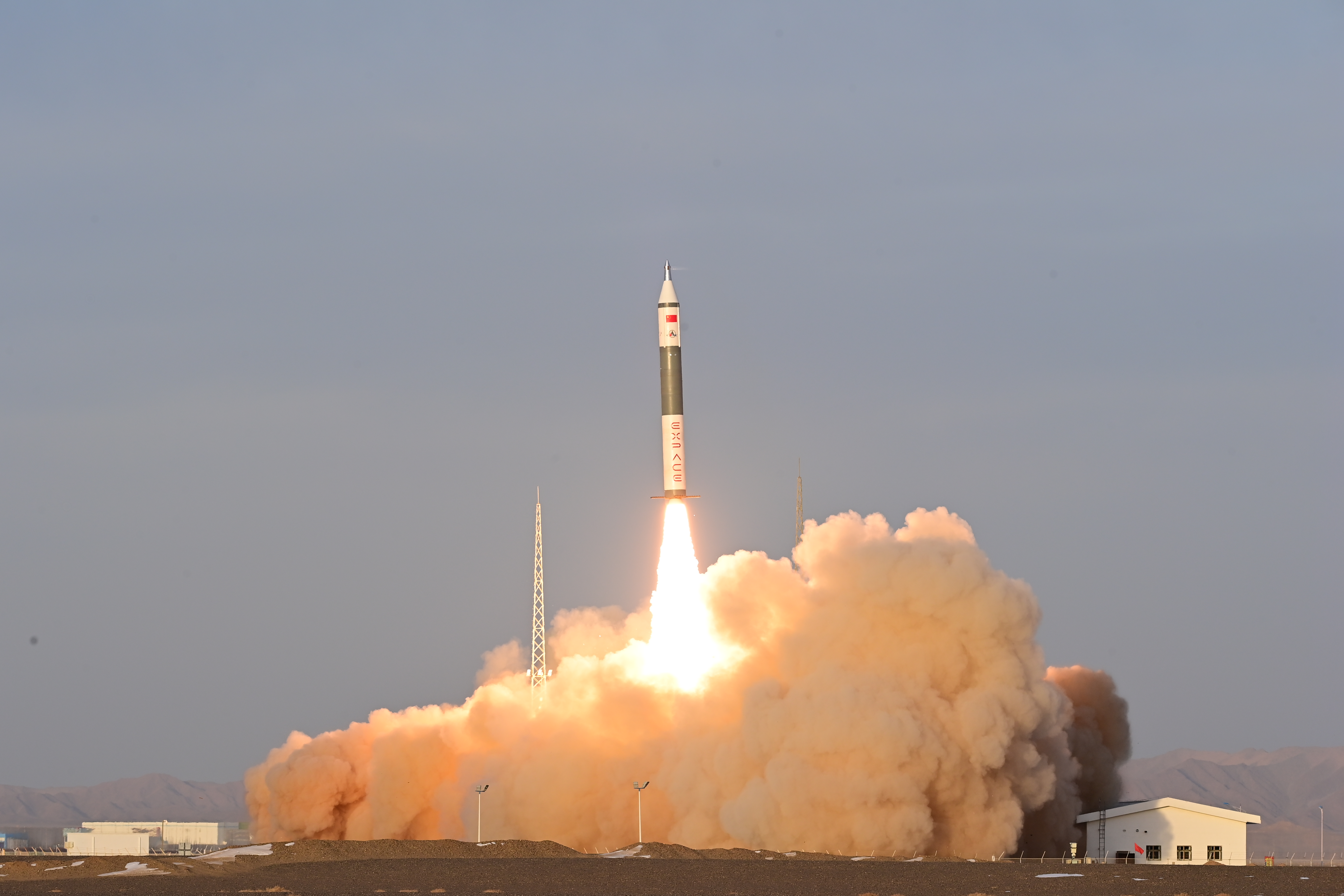
China successfully launches its space station lab module Wentian, the largest spacecraft ever developed by the country, into orbit, July 24, 2022. /CFP
China successfully launches its space station lab module Wentian, the largest spacecraft ever developed by the country, into orbit, July 24, 2022. /CFP
China plans to carry out over 60 launch missions this year, according to the country's major space contractors.
China Aerospace Science and Technology Corp (CASC), the main contractor for the Chinese space program, announced on Tuesday that it plans more than 50 aerospace tasks in 2023, according to its annual work report.
The manned space station project will enter the stage of application and development, and China's space station will realize normalized operation in 2023, said Zhang Zhongyang, General Manager of the CASC, who presented the report at the company's annual research and production work conference in Beijing.
The planned spaceflights include manned and robotic missions to the newly assembled China Space Station (CSS) and the maiden flight of the Long March-6C carrier rocket, according to the report.
The country will also launch the Long March-6D carrier rocket in 2023 and complete the performance of commercial aerospace and satellite export contracts, Zhang added.
China will fully promote the fourth phase of its lunar exploration program and the planetary detection project in 2023, carrying out research of the Chang'e-7 and Tianwen-2 probes, Zhang said.
Most of the launches will be made by the company's Long March carrier rocket family, and the rest will be conducted by the Smart Dragon series, said Zhang, adding that the company will continue with the research and development of the Tianwen-2 asteroid probe and the Chang'e-7 lunar probe.
According to the report, the Tianwen-2 mission is scheduled for launch around 2025 to deploy a probe on an asteroid to collect and bring back soil samples, and the Chang'e 7 mission will land a sophisticated multipart spacecraft on the Moon's South Pole around 2026 to find traces of water, investigate the environment and the weather there, and survey its landform.
Another State-owned space enterprise, China Aerospace Science and Industry Corp (CASIC), also plans 10 spaceflights using its Kuaizhou-1A and Kuaizhou-11 solid-propellant rockets.

China launches its newest solid-fuel carrier rocket Kuaizhou 11 Y-2 at 9:15 a.m. (BJT) from Jiuquan Satellite Launch Center in northwest China, December 7, 2022. /CGTN
China launches its newest solid-fuel carrier rocket Kuaizhou 11 Y-2 at 9:15 a.m. (BJT) from Jiuquan Satellite Launch Center in northwest China, December 7, 2022. /CGTN
China conducts 64 rocket liftoffs in 2022
In 2022, China conducted 64 rocket liftoffs, setting a new national record.
Out of the 64 liftoffs, 53 were made by Long March-series rockets and carried out by subsidiaries of CASC, with Shanghai Academy of Spaceflight Technology undertaking 30 and the China Academy of Launch Vehicle Technology completing 23.
The Kuaizhou fleet carried out five flights, including the first successful mission of the Kuaizhou 11 model.
Beijing-based rocket company CAS Space, owned by the Chinese Academy of Sciences, performed the successful debut flight of its ZK 1A rocket last July. The model is now the country's largest and most powerful solid-propellant rocket.
China launched its newest solid-fuel carrier rocket Kuaizhou 11 Y-2 last December, sending a communication technology experiment satellite into targeted orbit.
In addition, three private Chinese rocket companies made four launches with their own models in 2022.